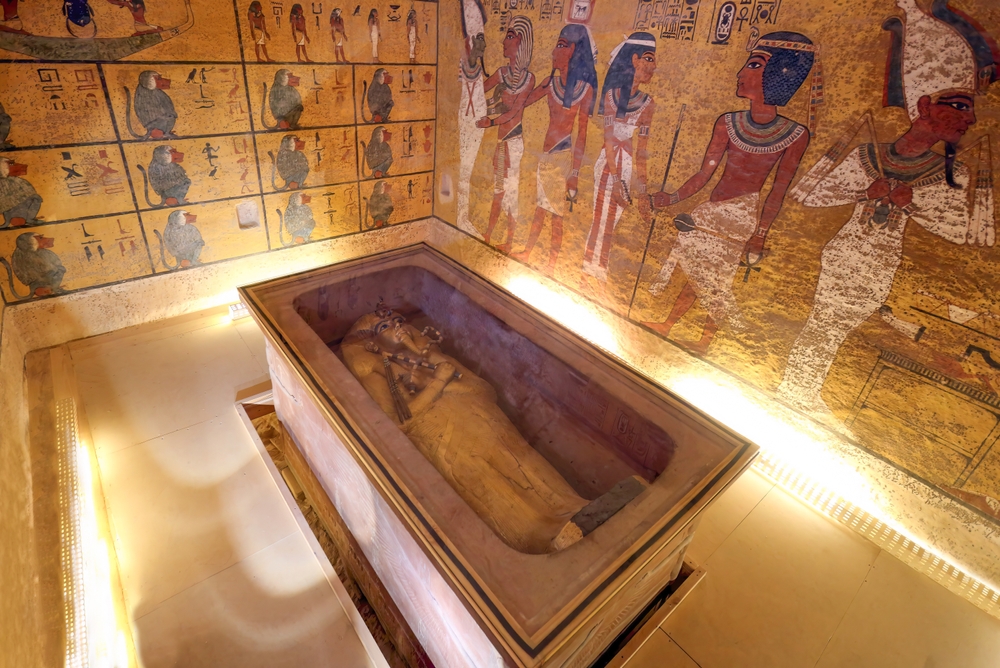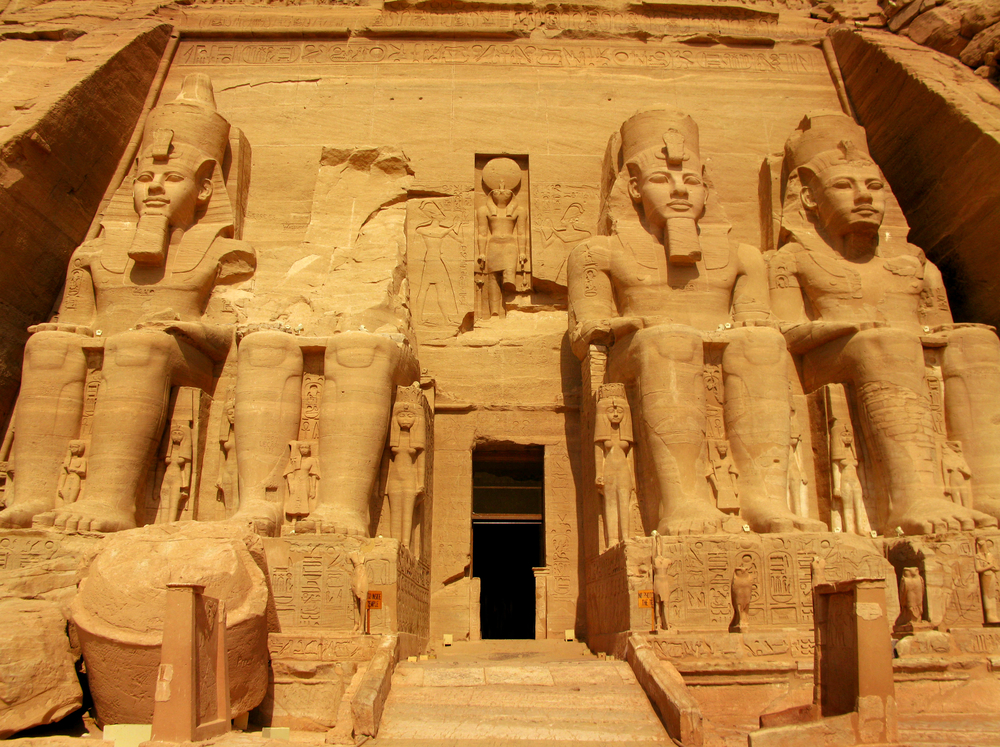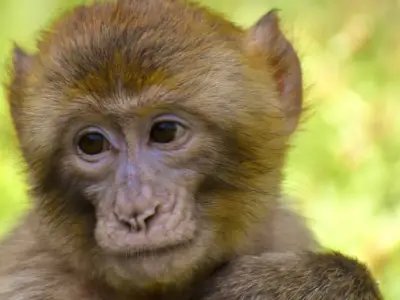Ammit – also known as the Devourer of Souls – is famously known in Egyptian mythology as a figure of divine retribution. Often misunderstood, Ammit's role in ancient Egyptian religious life offers a fascinating glimpse into how the Egyptians viewed the afterlife and moral accountability. This post explores the legend of Ammit, weaving through myths and unravelling her powers.
Jump to:
Who is Ammit?
Ammit, sometimes referred to as "Ammit the Devourer," was not a goddess in the traditional sense but a composite creature that played an important role in the afterlife. Unlike gods and goddesses who were venerated, Ammit was feared. She is often depicted as a fearsome combination of three animals considered the most dangerous in Egypt: the head of a crocodile, the torso of a lion, and the hindquarters of a hippopotamus.
Recommended for you!
Best SellersAmmit’s Myths

Ammit features heavily in myths surrounding the afterlife, making her a feared presence in Egyptian Mythology. Three popular mythos include:
Myth 1: The Weighing of the Heart
The ancient Egyptians believed that before a deceased person could reach the afterlife, their heart would be weighed against the feather of Ma'at, symbolising truth and justice. This ceremony, known as the "Weighing of the Heart," was crucial. The heart, which was believed to be the seat of the soul, had to be as light as the feather, free from sin and wrongdoing.
Here is where Ammit comes in. Stationed next to the scales, Ammit waited. If the scales tipped, indicating a heart burdened with wrongdoings, Ammit would spring into action, devouring the heart. This act represented the total annihilation of the soul's chance to enter the afterlife, condemning it to restlessness forever.
Ammit's presence was a constant reminder of the moral and ethical standards Egyptians were expected to uphold. Contrary to being an evil figure, she was essential in maintaining cosmic balance. By associating her with natural predators feared by Egyptians, the imagery reinforced the severity of her role – ensuring that Ma'at remained unbreached.
Myth 2: Ammit and the Pharaohs
Another myth discusses how even pharaohs, regarded as semi-divine beings in Egyptian society, were not exempt from judgment and the potential wrath of Ammit. It was believed that the gods directly judged the pharaohs, and Ammit was ready to devour their hearts if they failed to uphold Ma'at during their reign.
This narrative reminded the rulers and their subjects that no one was above the law in the eyes of the gods, reinforcing the idea that moral integrity was paramount for all, regardless of their earthly status.
Myth 3: The Legend of the Lost Souls
A lesser-known myth speaks of the "Lost Souls," those unfortunate enough to have been devoured by Ammit. According to legend, these souls, consumed by Ammit, did not merely vanish but became restless spirits, wandering the Duat (the Egyptian underworld).
This myth elaborates on the concept of divine retribution and serves as a cautionary tale about the importance of leading a virtuous life. It also highlights Ammit's role as a creator of restless spirits, adding a layer of depth to her character as a guardian of ethical standards and spiritual purity.
Ammit's Powers
Ammit's powers in Egyptian mythology were centred around her role in the afterlife judgment process. Here’s a breakdown of her specific abilities:
- Soul Devouring: Ammit's primary power was her ability to devour the hearts of the deceased if they were found unworthy during the Weighing of the Heart ceremony. This act symbolically represented the complete obliteration of the soul’s chances for an afterlife.
- Moral Enforcer: Through her very existence and the fear she inspired, Ammit enforced the moral and ethical standards of ancient Egyptian society. Her presence alone encouraged the living to adhere to the principles of Ma'at (truth and justice).
- Symbol of Ultimate Justice: As a direct participant in the afterlife judgment, Ammit was considered the last judge a soul would face, embodying the finality of divine justice in the Egyptian religious system.
Ammit's Symbols

The imagery and symbols associated with Ammit reflect her daunting role within Egyptian mythology:
- Composite Creature: Ammit's form itself was symbolic, combining elements of a crocodile, lion, and hippopotamus. Each animal was among the most feared in ancient Egypt, symbolising strength, power, and dominance over the natural world.
- Scales of Justice: Although not a direct symbol of Ammit, she is inseparably linked to the scales used in the Weighing of the Heart. Her presence next to the scales underscored the seriousness of the judgment process.
- Images in Tombs and Temples: Depictions of Ammit were common in the artwork of tombs and temples, particularly in scenes depicting the judgment of the deceased. These images served as reminders of the spiritual stakes at hand.
Is Ammit a Goddess?
Ammit did not receive worship or have temples dedicated in her honour like other deities such as Isis or Osiris. Instead, her existence served a specific purpose tied deeply to the afterlife ideology of ancient Egypt. This makes her a unique figure in Egyptian mythology, where her powers are both feared and respected as part of the divine order.
Ammit's Associations with Other Deities
Ammit's role in Egyptian mythology was somewhat isolated compared to other deities who had complex relationships and family ties. Here’s a list of some of her connections with other mythical creatures:
- Anubis: One of her closest associations is with Anubis, the jackal-headed god of embalming and the afterlife. Anubis was responsible for overseeing the Weighing of the Heart ceremony, during which Ammit played a crucial role. Their functions were complementary, with Anubis guiding the souls and Ammit serving as the executor of justice.
- Osiris: As the judge of the dead and ruler of the underworld, Osiris was another major deity connected to Ammit. In the judgment hall, Osiris presided over the entire process, making the final decision based on the outcome of the heart’s weighing. Ammit’s actions were thus directly linked to his judgments.
- Thoth: Although not directly related, Thoth, the god of wisdom and writing, also played a role in the Weighing of the Heart by recording the proceedings. This indirect relationship placed Ammit within a broader context of divine judgment involving multiple gods.
Cultural Impact of Ammit

Ammit's impact on Egyptian culture was powerful. Artwork and writings depict her as an integral part of the judgement scenes in tombs and temples, serving as a reminder of the spiritual consequences of one's life actions. Her image conveyed a message of ultimate justice, reinforcing the societal norms and expectations of ancient Egyptian culture.
Recommended for you!
Best SellersFrequently Asked Questions About Ammit
What was Ammit the god of?
Ammit was not a god but rather a mythical figure in ancient Egyptian religion. She was associated with the afterlife and was known as the "Devourer of Souls". Her role was to consume the hearts of those deemed unworthy, preventing them from entering the afterlife.
Is Ammit considered good or evil?
Ammit is often viewed through a neutral lens rather than being classified strictly as good or evil. According to the principles of Ma'at, her role was essential for maintaining order and justice in the afterlife by consuming the hearts of those who failed to live a righteous life.
Why did the ancient Egyptians fear Ammit?
The ancient Egyptians feared Ammit because her presence meant the ultimate punishment—nonexistence in the afterlife. For Egyptians, who placed great importance on the afterlife, being devoured by Ammit was a fate worse than death itself.
How was Ammit depicted in Egyptian art?
In Egyptian art, Ammit was typically depicted as a terrifying blend of three creatures: the head of a crocodile, the torso of a lion, and the hindquarters of a hippopotamus. This composite form symbolised her ferocity and power.
Is Ammit a male or a female?
In Egyptian mythology, Ammit is generally considered female. The feminine aspect is reflected in her name and her role in the mythology, which aligns with nurturing concepts of rebirth and renewal, albeit in a fearsome form.
Who betrayed Ammit?
This question seems to stem from modern fictional interpretations of Egyptian mythology. In traditional myths, there is no account of Ammit being betrayed as her role was straightforward and bound to the divine laws of the afterlife, not subject to the dynamics of betrayal or loyalty that characterise human relationships.
Study Egyptian Mythology for £29
Are you intrigued by Ammit and the rich world of Egyptian mythology? If you wish to explore more about Ammit or other figures from Egyptian lore, Centre of Excellence offers an Egyptian Mythology Diploma Course. This course dives deep into the myths, gods, and practices that shaped ancient Egyptian culture. For a limited time, you can enrol in this comprehensive course for just £29.













